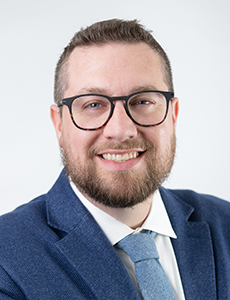PLUS Review: What You Need to Know About Professional Liability Growth, Opportunity and Risk

A penny saved is a penny earned: That is the fundamental driving force behind the surging demand for professional liability insurance.
Traditionally large escrow reserves were required in high-dollar business transactions to protect counter-parties against misrepresentation or worse. Complex and fluid exposures remain a constant challenge, but the monetary size of transactions along with the highly litigious nature of business means that insureds increasingly favor the formal risk transfer of insurance to the temporary approach of escrow.
“If a client of ours is buying or selling, we are discussing PL,” said Terrence Tracy, managing director of commercial insurance for brokerage Conner Strong & Buckelew.
M&A risk represented one feature of the program at the PLUS International Conference being held November 7 through 9 in San Diego. Former Secretary of State John Kerry delivered the keynote address the afternoon of Nov. 7, reviewing the geopolitical challenges of the day.
Nov. 8 started with a review of directors and officers coverage and trends and ran through emerging risks from the opioid crisis to blockchain technology.
One session on employment practices PL was titled “Wheel of Misfortune.” Good news, though; there were positive messages as well, including the session on the benefits of an inclusive workplace. There was even a session on service-animal risks.
Professional Liability Insurance’s Relationship With M&As
But it’s the pace of M&As across various industries that got a good deal of attention in San Diego.
“In 95 percent of transactions, it will be the buyer that purchases coverage, but having that to reduce escrow benefits both buyers and sellers,” Tracy said.
He noted that about one in six transactions sees a claim of some kind, which he credits to the due diligence of underwriters.
“They are going into the data rooms and putting experts into the transaction. It is not really a new type of coverage, it has just gotten hot in the last few years. It used to be maybe 20 percent of deals had coverage, now that is growing toward 25 percent because it just helps with the transaction.”
“We will find out in two or three years who is doing their due diligence. Those that are mispricing will be out soon.” — Terrence Tracy, managing director of commercial insurance, Conner Strong & Buckelew
Performance perpetuates growth.
Tracy added that “five years ago, there were only about five or six carriers offering PL. Today there are 20 or 21. That is good for customers.”
He acknowledged any growing market will attract its share of hot money: “We will find out in two or three years who is doing their due diligence. Those that are mispricing will be out soon.” Premiums in the U.S. are running 2 percent to 2.5 percent of transaction value, which is more expensive than in Europe.
“Representations and warranties [R&W] is a fast-growing and complex area within PL,” added Steven Boughal, vice president and chief underwriting officer in that line for The Hartford.
“There is a sophisticated insured base, so carriers and brokers are investing in talent. There are a lot of agents and brokers who were formerly in mergers and acquisitions. Insurers and brokers are also hiring in the areas of tax and résumé, as well as investing in claims specialists or adjusters. Some are developing expertise in forensic accounting to establish proof of loss or expert counsel if reputation has been breached. There are also even arbitration panels for difficult claims.”
Risks to Watch in Professional Liability Insurance
Employment PL is another segment that is often cited as among the fastest growing and most complex, along with R&W.
“We have to be careful in both underwriting and in claims management for employment PL,” said Boughal.
“We are seeing so much uncertainty in both law and litigation. We are making use of both data analytics and legal analytics, especially in the spotlight of the #MeToo era. We keep tabs on federal law, all 50 states and even some counties.”
The essential named perils are employment discrimination and hostile work environments. “Those are at the core of risk and are now seeing a raised profile especially for harassment,” said Boughal.
A meta-complication in the field is the blizzard of attention-grabbing social and business trends, from autonomous vehicles to social media. All could have implications for PL, but few have much material impact yet.
“One of our important jobs is education,” said Boughal. “We need to help insureds evaluate risk. In some cases these innovations will shift real risk. In others the mode may change but the underlying risk remains the same.”
Beazley has been writing PL in the U.S. since 2001 with dedicated teams in London as well as on the ground in the U.S., said Wayne Imrie, a Beazley management liability underwriter.
Imrie noted ruefully that in PL, “the issues we are dealing with don’t tend to get better.” In the inherent complexities of PL, Imrie explained, Beazley has sought growth.
For example, “in 2006 we were one of the first carriers to offer an element of wage-and-hour coverage. Historically that was excluded. It was a huge thing for us to come out with that. Of course we charged extra premium for it. And then in 2012-13 we were the first with standalone W&H defense.
“Our strategy, rather than to exclude, is to try to find a way to underwrite. If we see something getting manuscripted, we consider if that could be a broader add-on or coverage on its own. A more recent example is workplace-violence extension. We brought that out late last year.”
That said, not every innovation is a cause for action. “We watch the headlines and talk a lot internally,” said Imrie.
“One thing we are spending more time on is blockchain. It is moving so fast that I don’t know if anyone can be considered an expert. But we are aware of our own underlying risks in the areas of emerging technology. We examine how they could shift as things develop.”
Cyber risk has been a hot topic for several years, so much so that there are conferences just about it. Tracy noted “some carriers have put in cyber-related exclusions, but we are seeing that ease a bit. Cyber liability can have a significant impact when purchasing a company.”
In many ways, PL coverage is a bit like going down the rabbit hole or into a hall of mirrors. Imrie noted one example: “There is a developing area of website accessibility under the Americans with Disabilities Act. Companies that provide essential information online face an issue because the visually impaired may not have access. Many sites fall down on this. It is no different than a requirement for a ramp out in front of a business.”
For all that complexity and rapid change, there is some stability in capacity as well as terms and conditions — at least in some segments.
“Our lines are fairly stable,” said Imrie. “There is always an odd carrier pulling out or changing segments, but they get replaced. In terms and conditions, brokers have done a good job for their clients, just as underwriters have done a good job of meeting the needs of insureds.” &












